Sandblasting vs. Wet Blasting
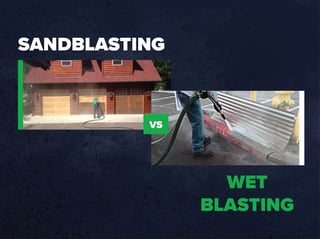
Did you know that sandblasting and wet blasting can be done without having to purchase multiple pieces of equipment? Our line of Dustless Blasting machines provides you with the opportunity to do either, depending on the project at hand. Speaking of which, when is it the right time to sandblast? And when is it better to wet blast? Let's cover the basics as well as some applications to help you make the right call to finish various projects or jobs.
What is Sandblasting?
Sandblasting is a blasting process that uses sand to help remove paint, grime, rust, oil, dirt, and many other forms of buildup from surfaces. Sandblasting can also be used to prepare a surface for painting or other forms of coating.
Reasons to Sandblast
When organic abrasives, such as corn cob or walnut shell, are required for a project, sandblasting (also known as dry abrasive blasting) is the preferred method. For example, you may find blasting natural woods, such as log cabins or wooden furniture, a typical task. Other sandblasting applications might include:
-Cleaning molds
-Preparing surfaces for painting or other forms of coating
-Etching glass
-Removing paint or stand from wood or log homes
.jpg?width=960&name=Scotts%20Sandblasting%20and%20Painting%20wood%20blasting%20(1).jpg)
What is Wet Blasting?
Wet blasting, also known as vapor blasting, uses a slurry of water and abrasive media. The slurry is blasted onto the surface being cleaned.
REASONS TO WET BLAST
Remember, Dustless Blasting is also just as capable of wet blasting. Since wet blasting reduces the dust plume, it's fantastic for jobs that may have other properties or people around. Blasting in residential areas, such as in towns or busy roads, is simple and does not affect anything else. It will also be considerably easier to clean up in these densely populated locations with the appropriate confinement system.
Wet blasting has several advantages over sandblasting, including:
-Reduced dust levels: When wet blasting, the water in the slurry suppresses the dust created by the abrasive media, making it a much cleaner process.
-Less wear and tear on the equipment: The water in the slurry cools the abrasive media, reducing the wear and tear on the sandblasting equipment.
-Multi-purpose capability: Wet blasting can be used for a variety of applications, while sandblasting is typically used for more specific tasks.
Now that we've gone over sandblasting vs wet blasting, as well as their applications, it's time to decide which process is best for your project. If you're still unsure, contact us. We would be happy to help you select the right method and machine for the job.
Automotive - Sand or Wet Blast?
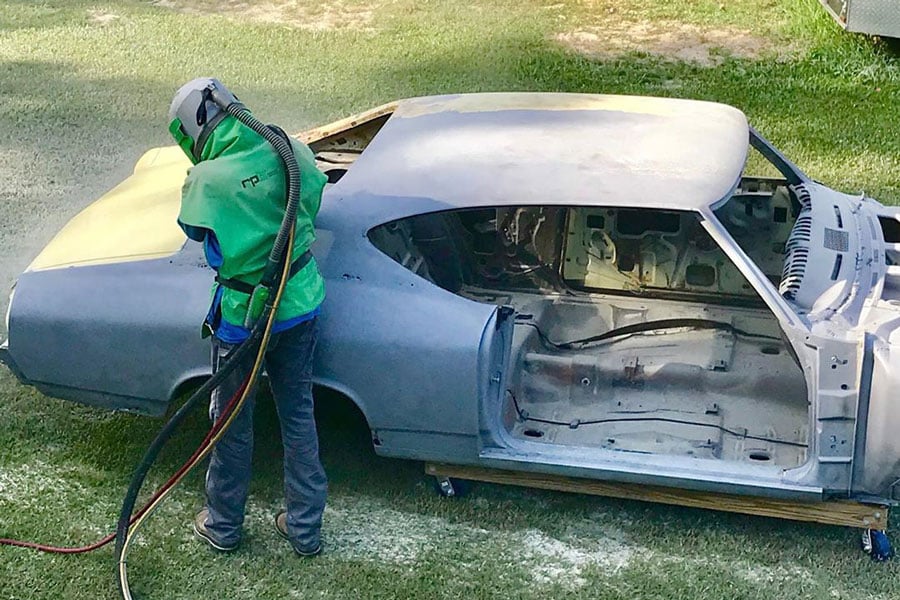
When it comes to wet blasting in the automotive industry, it offers a solution to minimize the risk of warping that dry abrasive blasting may cause. Wet blasting also provides enhanced visibility during the blasting process. It is an ideal choice for cleaning the exterior of a vehicle, including the paint and body. On the other hand, dry blasting is preferable for interior car restoration, as it allows for easier removal of spent media from all the nooks and crannies.
Industrial - Sand or Wet Blast?
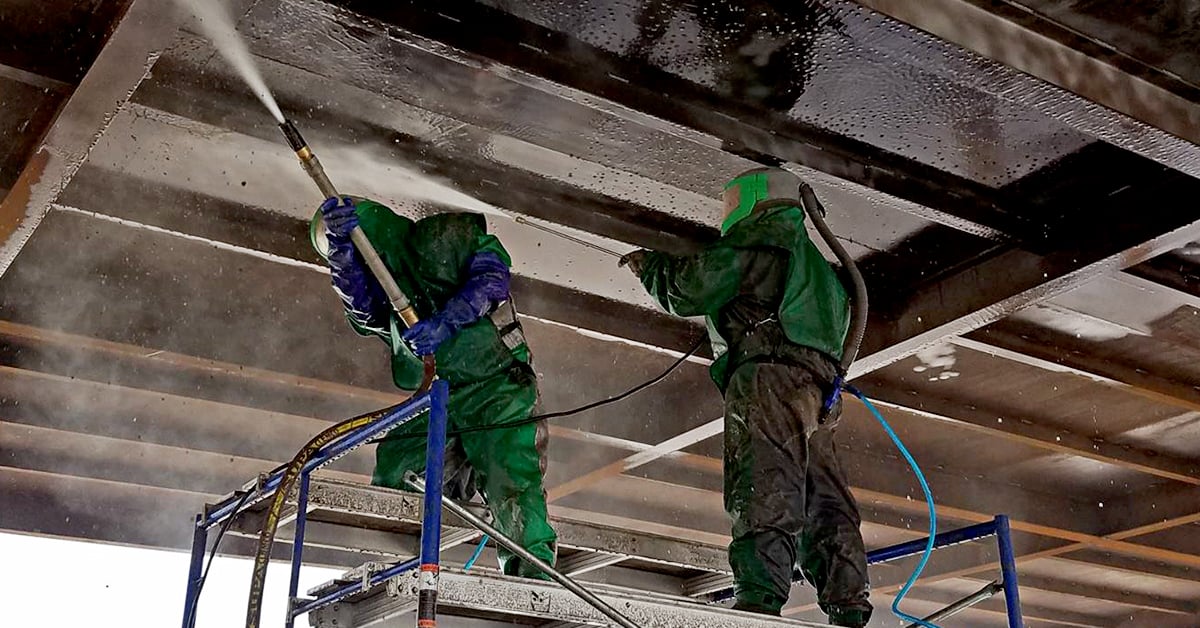
The industrial sector often uses sandblasting for large-scale projects. When sandblasting concrete, stone, or metal buildings, using a dustless blaster with a containment system is important to protect the workers and those around the job site. Dustless Blasting is also a great option when you need to remove paint from industrial equipment or clean molds.
Residential - Sand or Wet Blast?
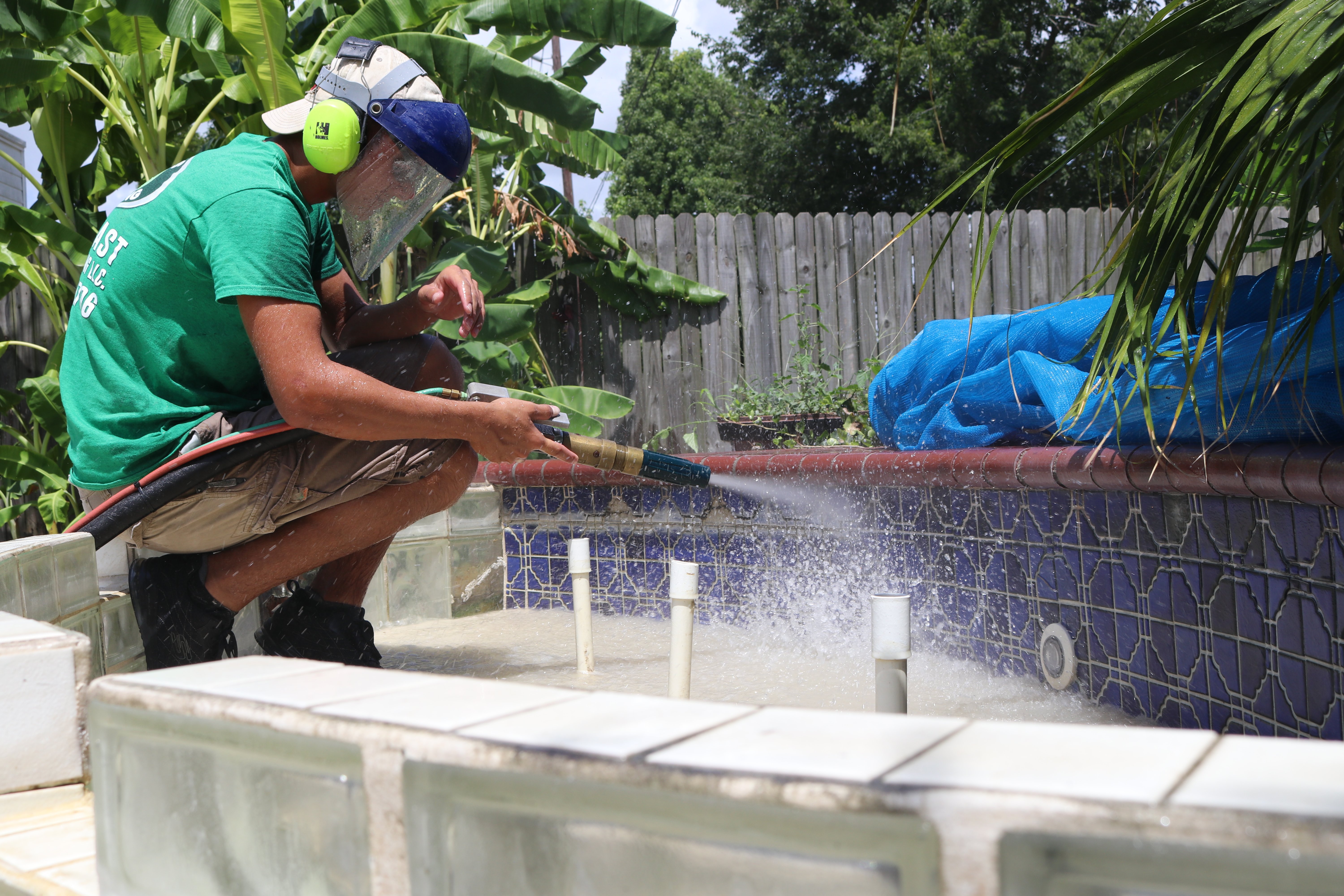
For most residential projects, we recommend wet blasting. When sandblasting in or around a home, just like with industrial projects, we recommend using a dustless blaster with a proper containment system in place to protect people and their belongings. Wet blasting is less likely to damage surfaces and create dust that could be harmful to inhale.
So, Which Method is Right for Your Project?
Now that we've gone over the basics of sandblasting and wet blasting, it's time to decide which method is right for your project. If you need to remove contaminants, solid particles, or any other type of buildup from a surface, sandblasting is a great option. If you're looking to clean an engine, prepare a surface for painting, remove paint from a car, or restore a stone or brick surface, wet blasting is the way to go.
No matter which method you choose, our line of Dustless Blasting machines can accommodate your needs. Contact us today to learn more about our machines and how they can help you with your sandblasting or wet blasting project!
THE ALL-IN-ONE BLASTING MACHINE
With your Dustless Blasting machine, alternating from wet blasting car panels to dry blasting the internal pieces is incredibly easy. For more information on going from wet to dry blasting, check out this article.
If you are interested in learning more about what your Dustless Blasting machine can do, click here to access our online training database.
IN CONCLUSION
With Dustless Blasting, always remember:
THE MOBILE ADVANTAGE
Dustless Blasting is a low-impact method of blasting that uses water to disrupt the dust plume, making it environmentally friendly and requiring no large containment. This makes it perfect for blasting things that are too big to go into a blast cabinet or can't be transported. Because they do not generate hazardous waste or require specialized disposal, you may use one of our mobile units safely.
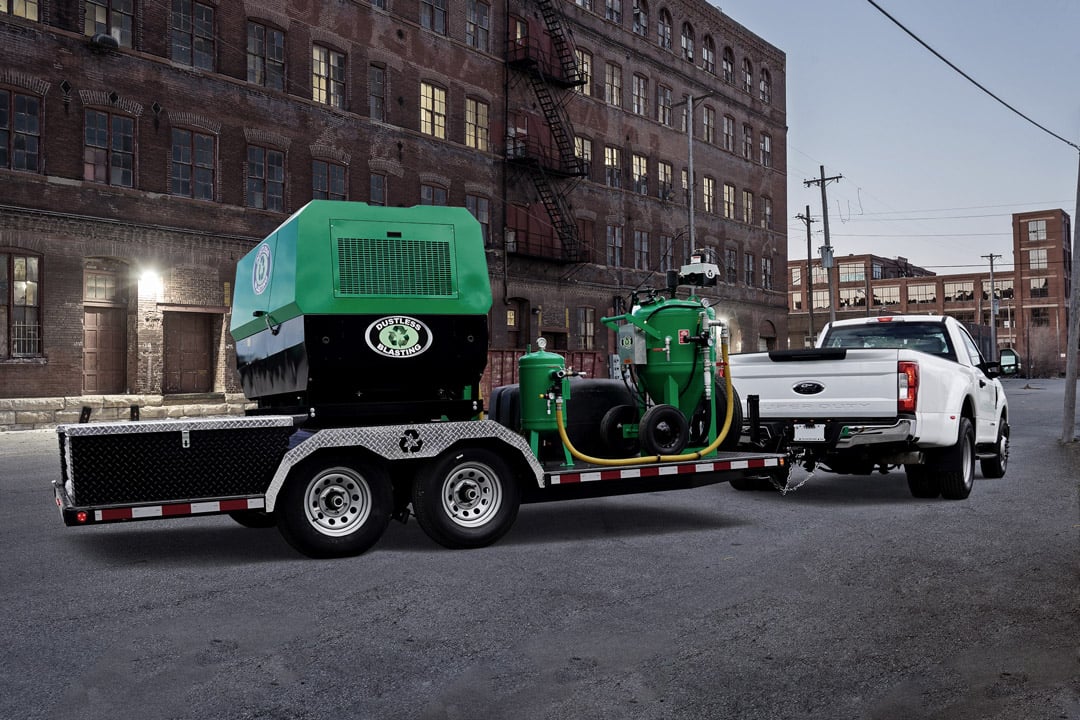
If you're looking for the right abrasive blasting media that is effective, versatile, and will get any tough job done, reach out to us! The right abrasive paired with the Dustless Blasting advantage will make you unstoppable in 2022 and beyond.
.jpg?width=1200&name=discovery-curb-paint-2%20(1).jpg)
